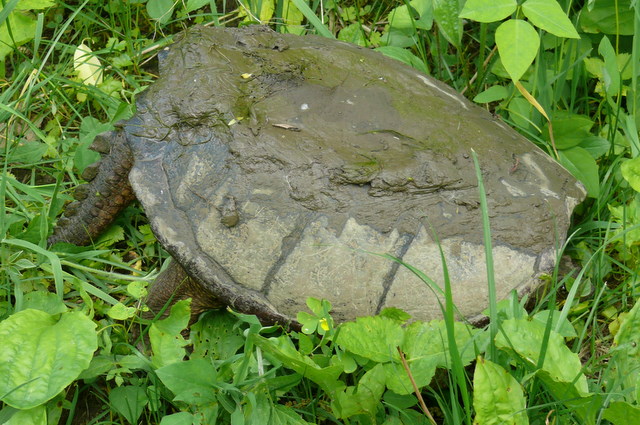More insects! It’s a good time for them – warm moist weather – and interesting ones are everywhere.
A blue Damselfly – one of the Bluets.
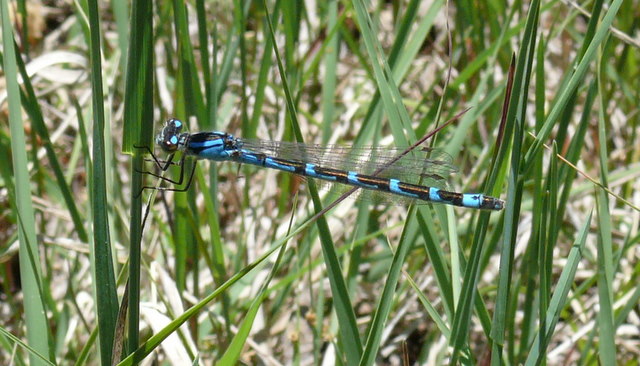
I’ve been finding some great caterpillars.
This is a Linden Looper – a beautiful little caterpillar. Sometimes I see them on the surface of leaves, sometimes hanging by a silk thread from a leaf. They eat many different kinds of leaves – I’ve found them on oak, walnut, and elm as well as Linden. They don’t do well in captivity – I’ve tried raising them several times, and none have survived.
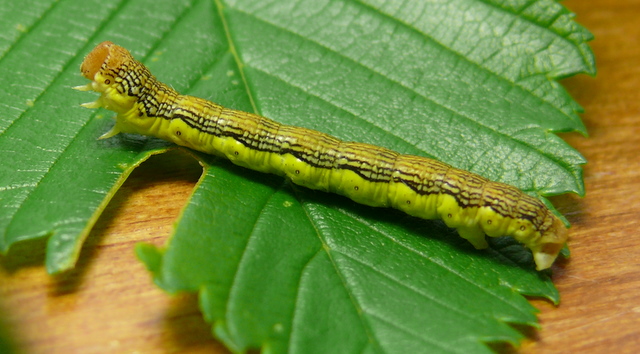
Red-spotted Purples have come out this week – dozens of them along our driveway. I’m starting to look for their eggs – laid singly on the very tips of willow leaves (as well as many other tree leaves).
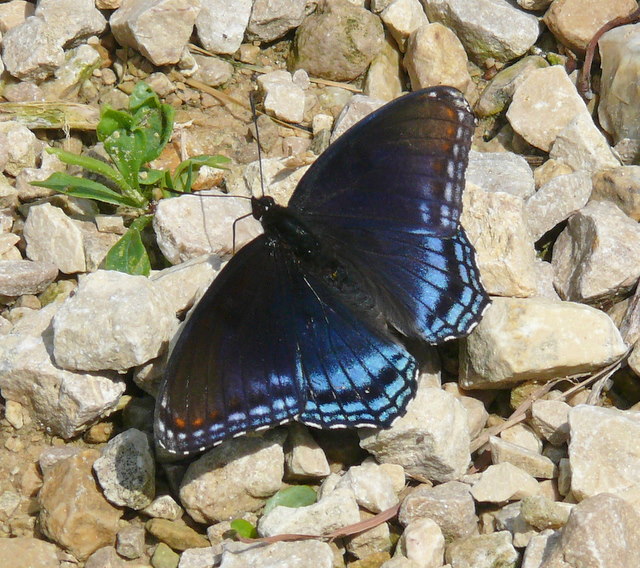
This Eight Spotted Forester (moth) had just emerged so its wings weren’t pumped up yet. It was very calm and willing to sit on my finger while it got used to the world.
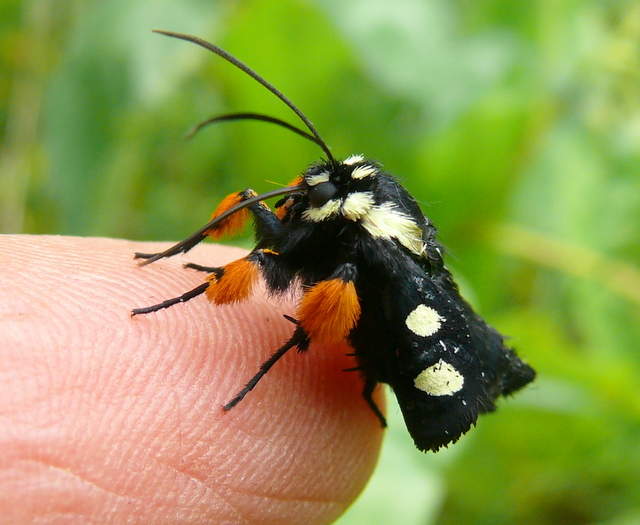
This beautiful pair of white moths was mating in the short grass of one of our mowed paths. They split apart as I watched, so I was able to get photos of both of them. They’re Pink-legged Tiger Moths, not very common, and probably at the northwest edge of their range.
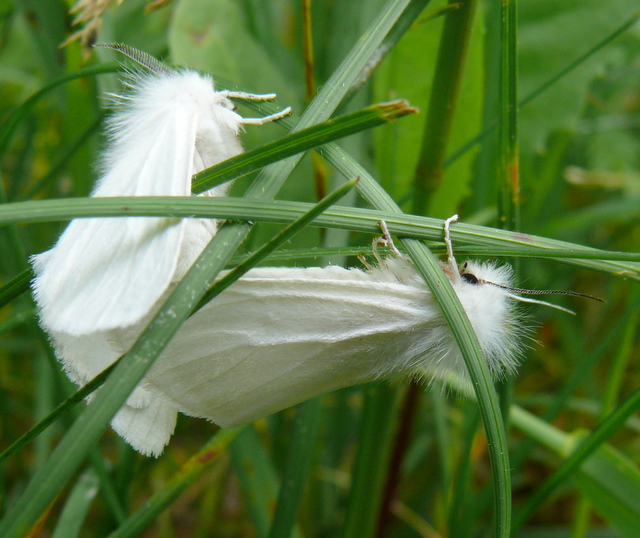
Here’s the male – with his feathery antennae
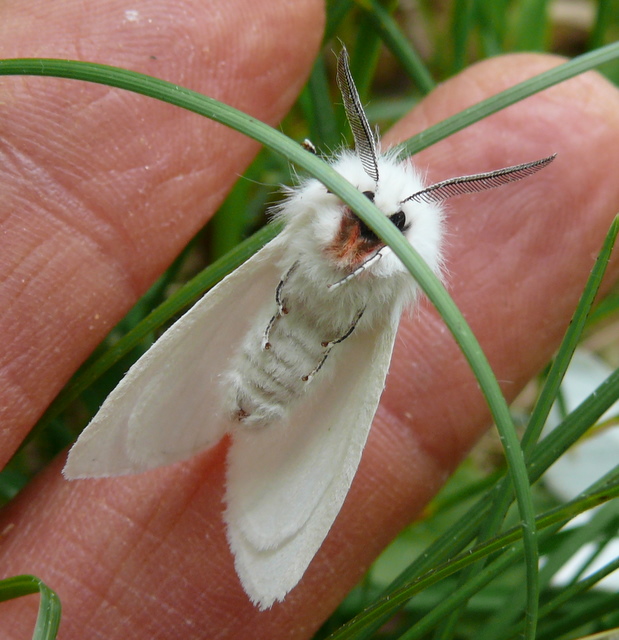
And the female with thin antennae
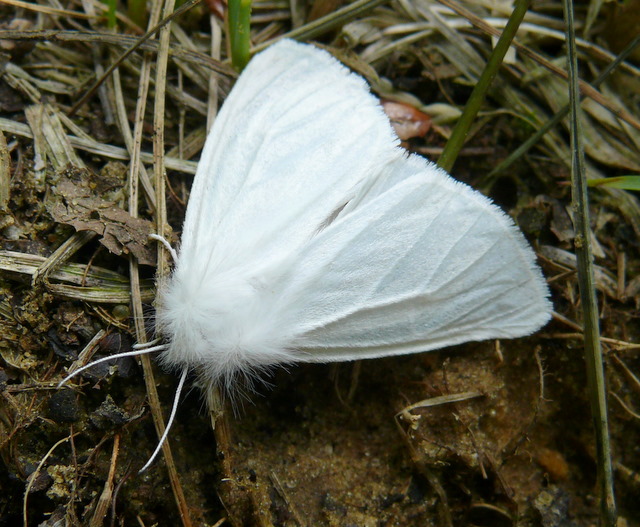
This is a Yellow Slant-line moth. It’s so easy to find moths I’ve never seen before, but often hard to identify them, and even harder to be sure I’ve identified them correctly. This one is distinctive enough that I’m sure of the id.
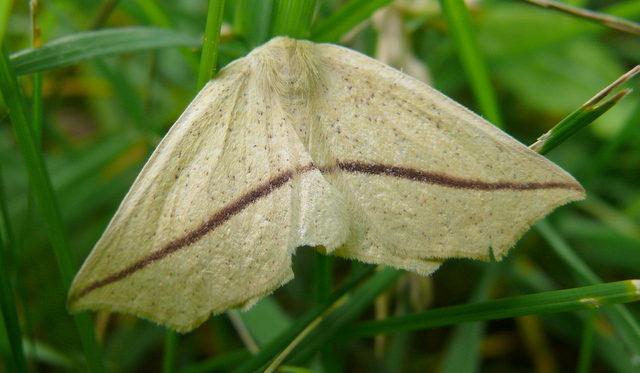
This is a Pinion moth caterpillar that I found on a birch trunk. There are several species of Pinions; they eat leaves of many plants but they also sometimes attack and eat other caterpillars. This one was hiding between the dried curls of birch bark – possibly hunting for prey. The white seed-like thing attached to the caterpillar is from a parasite – probably a wasp cocoon.
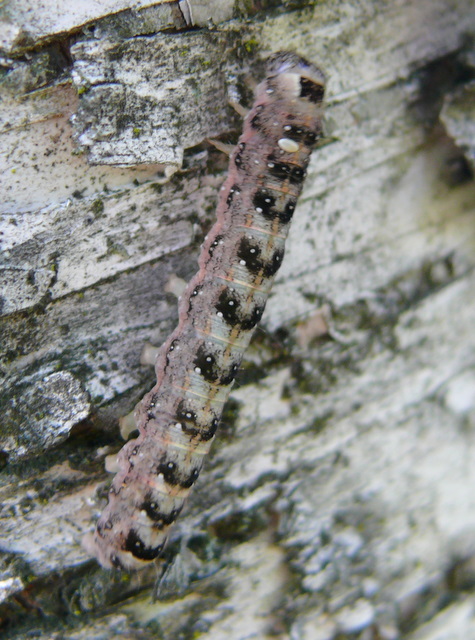
These are Tree Hoppers – probably Smilia camelus – on a small oak tree. Tree hoppers are also called “Thorn Bugs” because of their odd shape. They often associate with ants – and that may be what’s going on here.
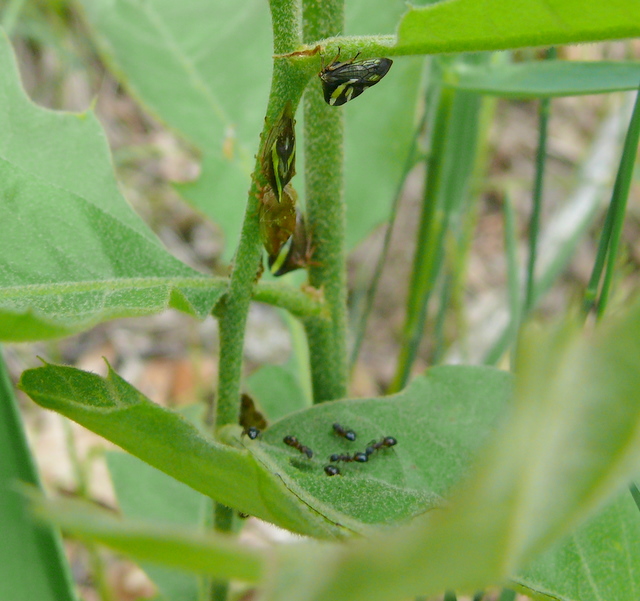
The males and females of this species look quite different. The one with the bright stripe is a male, the greener one is a female.
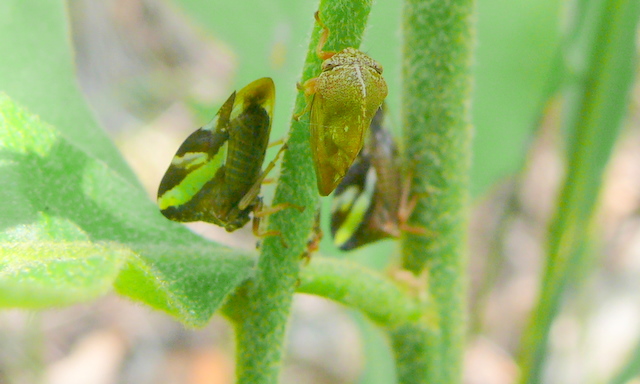
Here’s a better photo of a female. They are less than 1/2″ long.
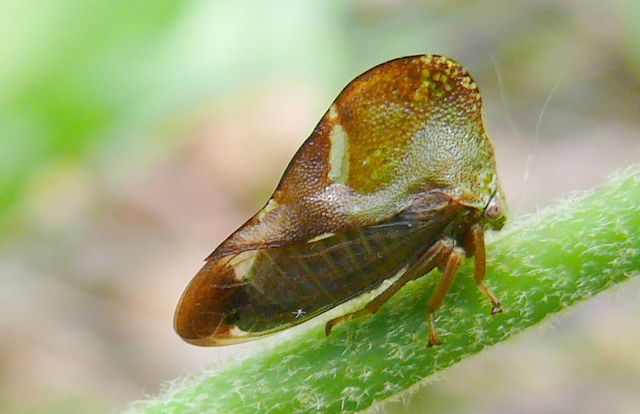
Here’s a beautiful dragonfly that I saw on our driveway. It’s a Midland Clubtail (thanks to Karl Legler for confirming the id).
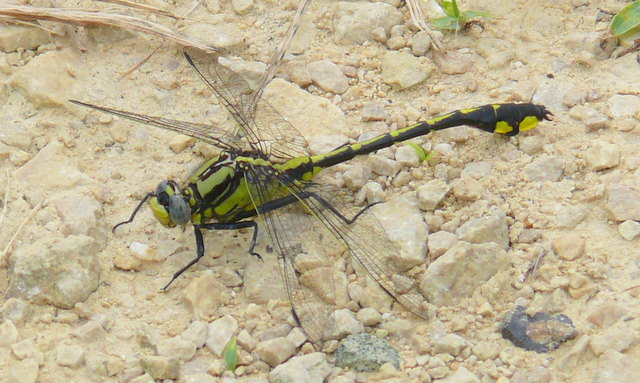
Long Dash – a skipper butterfly in our wetland
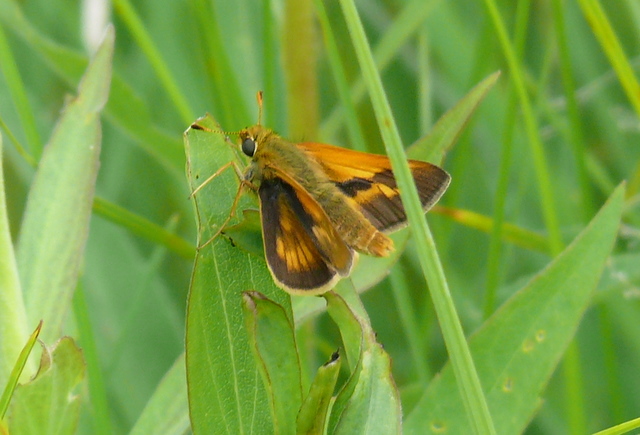
Silver-bordered Fritillary – another butterfly found in our wetland
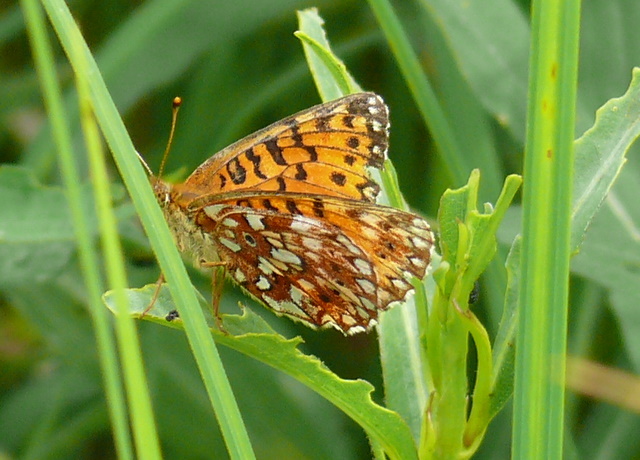
Some botany friends from the University at Stevens Point came to visit last week. Jeff is interested in sedges, so we walked the remnants and found quite a few for him to figure out. He’s going to send me a list when he gets them all identified. Alvin found the most interesting sedge of all.
Jeff

Alvin
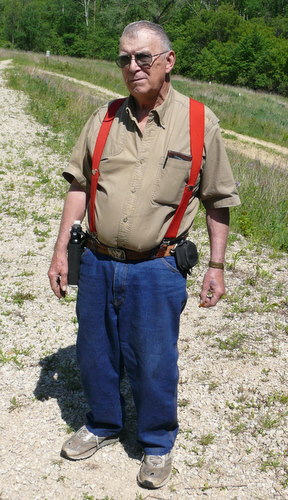
It’s a good year for rusts, as well as insects. Rusts are fungi – a group with a huge number of species. Each rust is a parasite on two different host plants, used at different points in the rust’s life cycle. Rust spores are yellow or reddish brown – similar to the color of rust that forms on metal – thus their name. This year I’m seeing rust spores on Rubus sp. (blackberries and raspberries), Prickly Ash, and Buckthorn.
This is a rust on Prickly Ash.
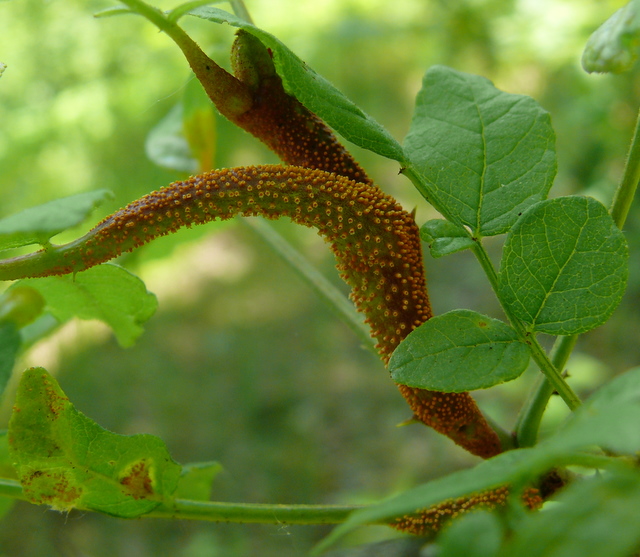
This is Crown Rust (Puccinia coronata var. avenae) on Buckthorn. The alternate host of this rust is Oats, so farmers are as concerned about the presence of non-native buckthorn as conservationists. Oat crop yields can be dramatically reduced when infected with Crown Rust.
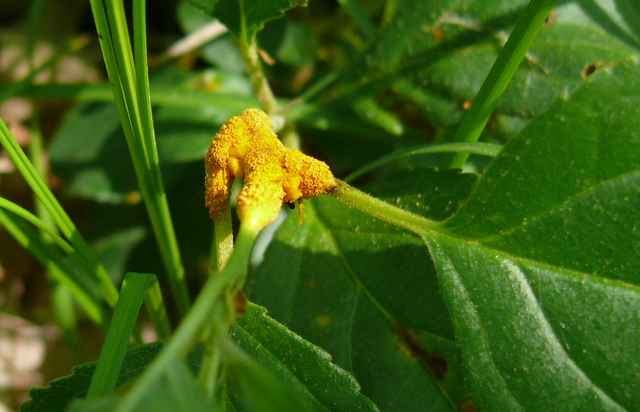
Here are a few of the flowers blooming at the farm right now.
This is Large-flowered Penstemon – a flower that I planted in all our prairies, but I’ve never seen it growing before. It’s so exciting to find these beautiful things that I’ve planted!
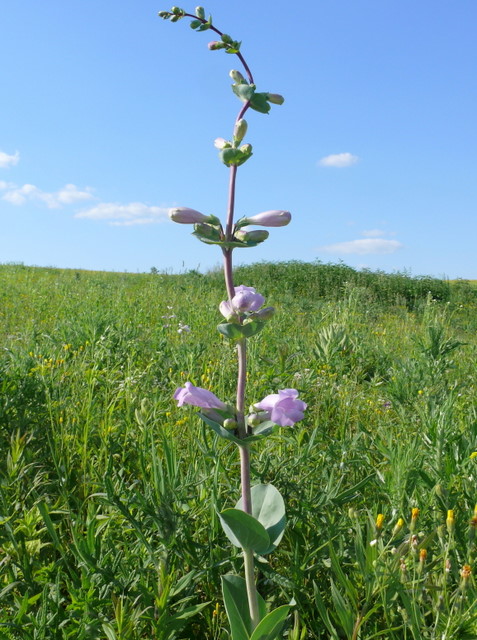
A close up view
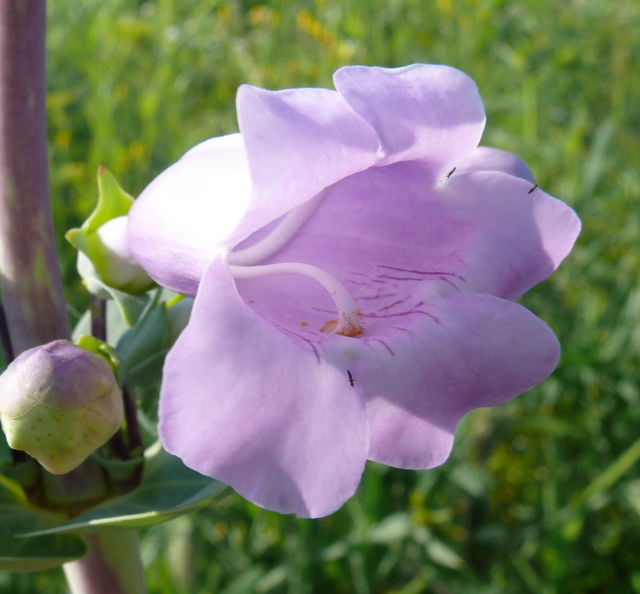
Balsam Ragwort
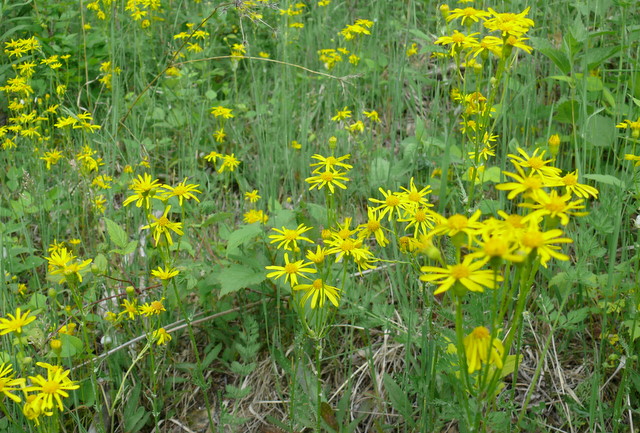
Balsam Ragwort with Northern Crescent butterfly
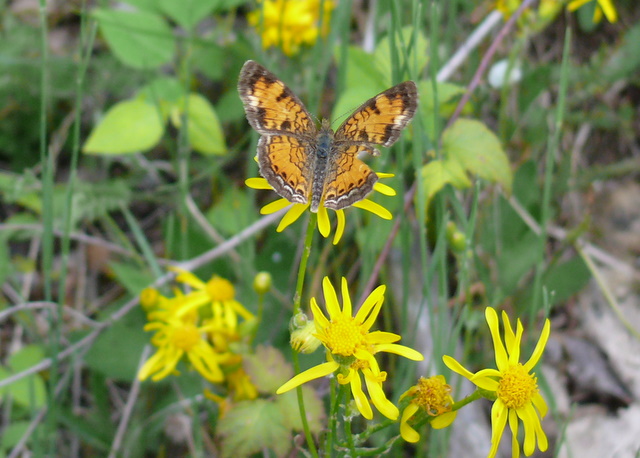
Forest Pea – growing in the woods
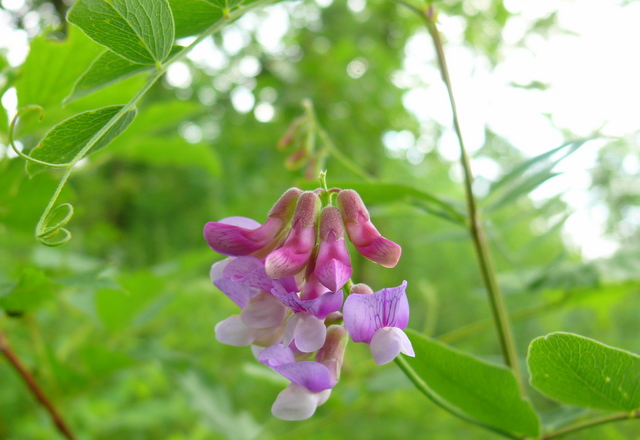
Low Bindweed – a low, not climbing, native morning glory. It grows in savannas, and I see it in the open woods behind the house which used to be a savanna.
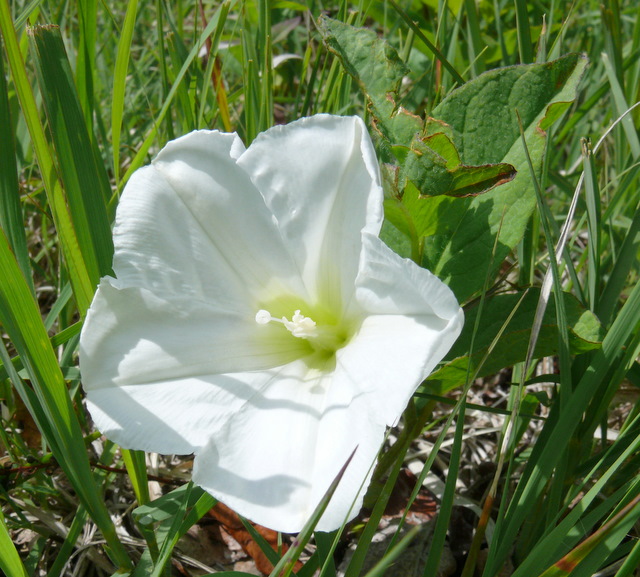
Here’s the Snapping Turtle from our neighbor’s pond – strolling along our mowed trail. It looks like it’s a female looking for a place to lay her eggs. I wonder where she found a male to fertilize them – the pond is a long way from anywhere – certainly a long way from any other turtles. She’s had mud on her shell for weeks – maybe it’s left over from her winter hibernation. When she saw us approaching her along the trail she raised her hind end, and lowered her head and glared at us. We stayed far away from those snapping jaws.
